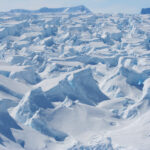Vertical flux of microplastic, a case study in the Southern Ocean, South Georgia
1 August, 2023 by Clara Manno, Emily Rowlands, Sally Thorpe, Victoria Peck
Estimated plastic debris floating at the ocean surface varies depending on modelling approaches, with some suggesting unaccounted sinks for marine plastic debris due to mismatches between plastic predicted to enter…Read more on Vertical flux of microplastic, a case study in the Southern Ocean, South Georgia
